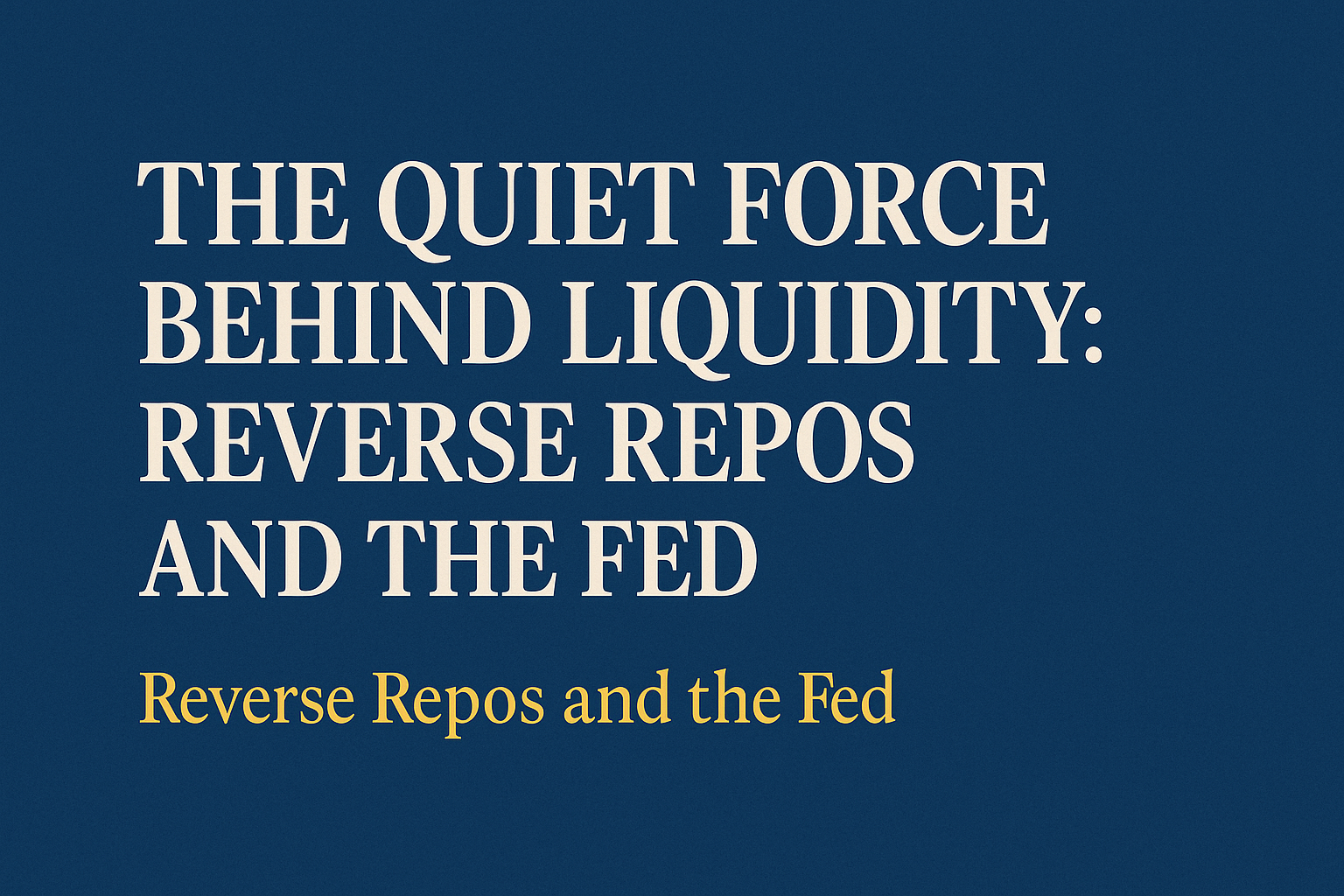The Quiet Force Behind Liquidity: Reverse Repos and the Fed
Written by Arbitrage • 2025-08-27 00:00:00

When most traders think about the Fed, they picture interest rate hikes, quantitative easing, or Jerome Powell's press conferences. But in the background, there's another tool quietly shaping liquidity in financial markets every single day: the reverse repo. It doesn't get CNBC headlines or spark heated debates on X. Yet, trillions of dollars often flow through this "plumbing" mechanism. If you want to understand how liquidity actually moves, you need to know how reverse repos work.
What Exactly Is a Reverse Repo?
At its core, a reverse repo (short for reverse repurchase agreement) is a short-term loan. The mechanics:
- The Fed "sells" securities (usually Treasuries) to banks, money market funds, or institutions.
- At the same time, it agrees to buy them back the next day.
- The cash flows to the Fed, the securities flow to the institutions, and the next day, the trade unwinds.
Think of it as Wall Street's version of pawning collateral overnight. Institutions lend the Fed cash and get Treasuries in return. The next day, they get their cash back - with a little bit of interest. It is the mirror image of a repo, where the Fed injects cash into the system. A reverse repo, by contrast, soaks it up.
The Fed's Reverse Repo Facility
In 2013, the Fed rolled out the Overnight Reverse Repo Facility (ON RRP). It gave a broad set of financial institutions - money market funds, government-sponsored enterprises (like Fannie Mae), and bank is a safe place to park cash overnight. Why? To keep short-term interest rates from drifting too low. If there's too much cash sloshing around, rates can fall below the Fed's target range. By offering reverse repos, the Fed creates a guaranteed floor - no one will lend cash below the RRP rate because they can always park it with the Fed.
At its peak in 2022, over $2 trillion a night was flowing into the RRP facility. That's not small change; it is a staggering sign of just how much liquidity was sloshing through the system after years of QE and pandemic stimulus.
Why Traders Should Care
Reverse repos might sound like an obscure plumbing tool, but they have real effects on markets:
- Liquidity absorption: When trillions sit in RRPs, that's money not chasing Treasuries, equities, or corporate bonds.
- Money market stability: RRPs keep funds from bidding rates into negative territory.
- Interest rate transmission: The RRP rate acts as a floor for the Fed Funds Rate, anchoring the short end of the curve.
For traders, RRPs are a barometer of system liquidity. If balances are high, it often signals excess cash in the system. If they start dropping, it can mean liquidity is tightening - or that cash is moving into other assets.
The Risks and Criticisms
Like any policy tool, reverse repos aren't perfect:
- Dependence on the Fed: Some critics argue that RRPs crowd out natural interbank lending, making institutions overly reliant on the central bank.
- Distortions: By soaking up liquidity, RRPs can reduce demand for T-bills or repo funding in private markets.
- False signals: A huge RRP balance doesn't always mean markets are "safe." Sometimes it just reflects a lack of other attractive short-term options.
Looking Ahead: The Future of Reverse Repos
As the Fed continues quantitative tightening (QT), the ocean of cash that once flooded into RRPs is shrinking. By mid-2024, balances had already fallen from their $2T peak to under $500B. Will the RRP facility fade away? Probably not. It has become a permanent fixture of the Fed's toolkit - an on-demand stabilizer for short-term funding markets.
For traders, it is worth keeping an eye on. RRP usage can tell you a lot about liquidity trends, cash demand, and how monetary policy is really playing out in the trenches.
Conclusion: The Silent Stabilizer
Reverse repos may not make headlines like rate cuts or inflation numbers, but they are a quiet force keeping the gears of finance turning. They provide stability, anchor interest rates, and help the Fed manage a system awash - or starved - of liquidity.
If you're trading in today's markets, don't ignore the plumbing. Sometimes the biggest moves start not with a speech, but with trillions parked overnight in a little-known corner of the Fed.